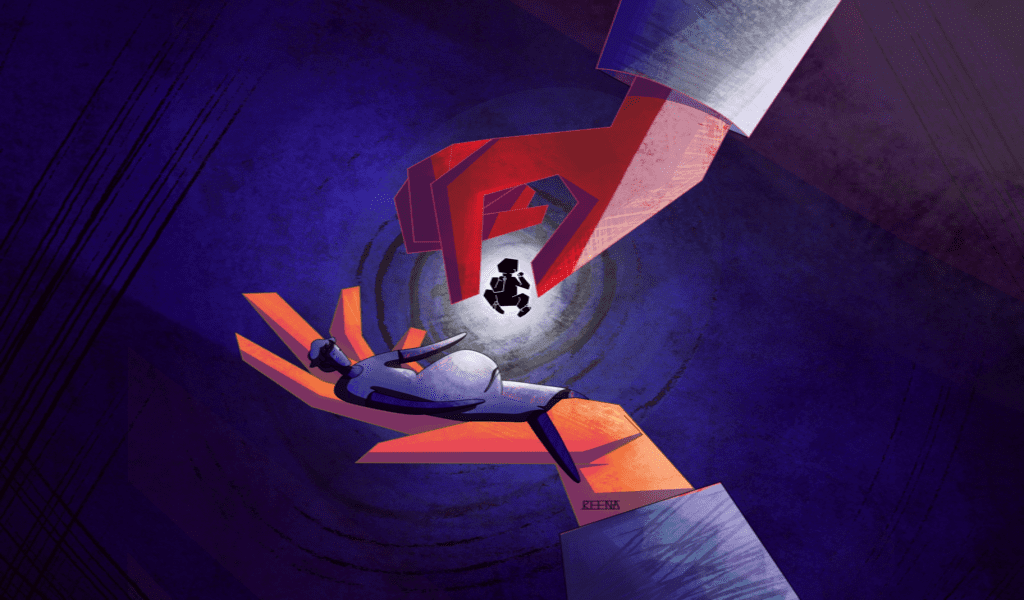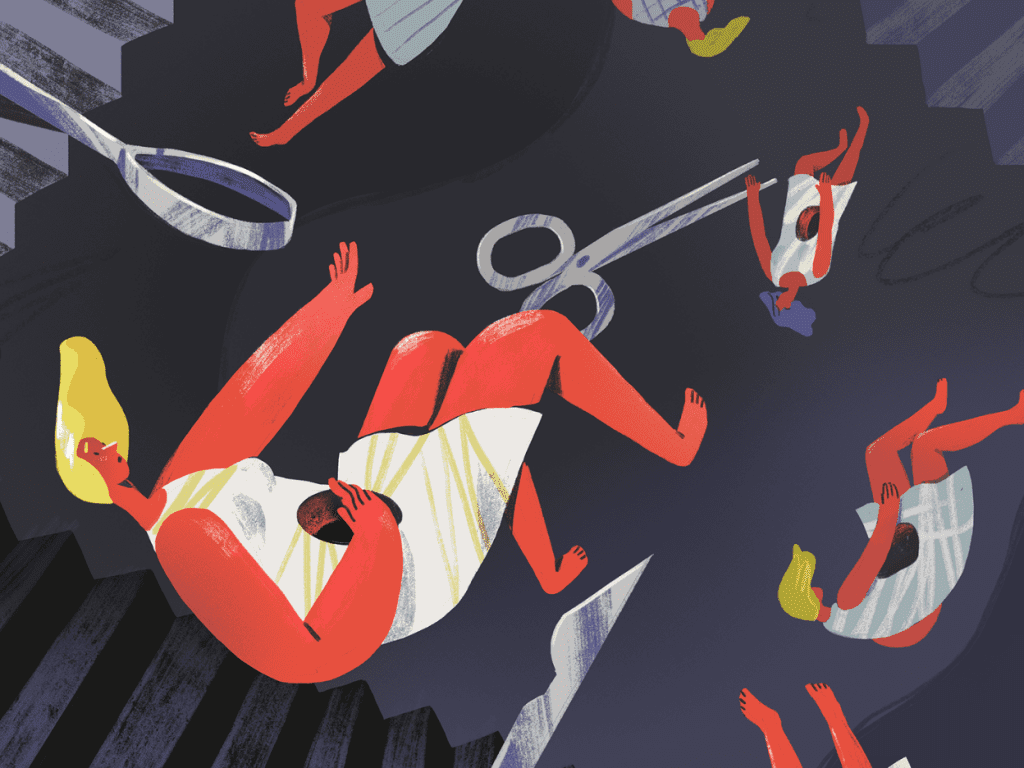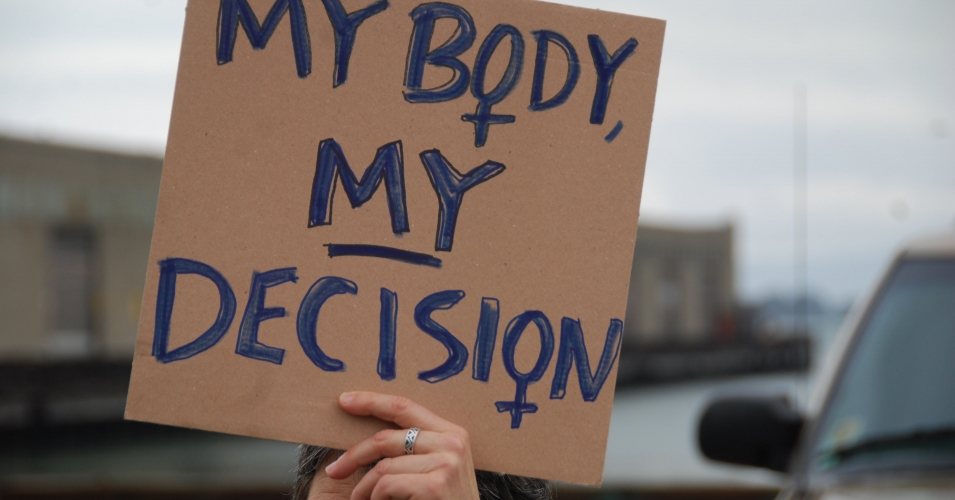
In a country like India, abortion is a very common term that almost everyone is familiar with. Although, the highest court of justice i.e. Supreme Court has passed a number of decisions on reproductive rights and the abortion jurisprudence, still, nothing is going to change until and unless people change their mindset.
In India, it is the Medical Termination of Pregnancy Act, 1971 that deals with abortion. Although in today’s time, we have witnessed changes in the mindset of people, still, labeling abortion to be unsocial hasn’t ceased to exist. But with the advancement and technological progress that the 21st century has witnessed, some changes have occurred. But it still exists in some form or the other. The concept of abortion leads to different questions.
Does a woman have no sole right over her body? Is abortion a sin that kills the unborn child? Is an unborn child certified as human and has the right to live? With changing times, the ideology of people has become more liberal and subsequently, many laws have been developed, legalizing abortion in India. In the society that we live in, abortion casts a very negative and traumatizing impact, especially on women. Abortion is a medical phenomenon but is also seen through the veils of culture, society, religion, and law. Abortion is a very grave issue. The notion of abortion in India is quite different when compared to other countries around the globe.
The Act
The Medical Termination of Pregnancy Act deals with abortion in India. Under one of the provisions of this act, adult women have the autonomy to decide for themselves. The act requires abortion services to be provided by trained and certified doctors in registered facilities. It provides many conditions and guidelines on the basis of which a pregnancy may be terminated up to the 20th week by a registered medical practitioner.
The Act allowed women to have abortions only under three conditions; if continuing the pregnancy would pose a risk to the mother, to the fetus or if the pregnancy was a result of rape or the pregnancy was caused due to contraceptives failure. Also as per Section 5, termination of pregnancy that has been beyond 20 weeks can also be allowed if there is a necessity to save the life of the mother. This rule was incorporated to prevent gender prediction and also the sex-selective abortions as it can be done under 20 weeks only. But now technology has advanced and so the sex of the child can be determined even before that.
It was amended in year 2002 and 2003 to improve women’s access to safe abortion where it gave village committees more input regarding health services. But what has not yet been evaluated is its impact on the number of safe abortions. However, what is seen is laggings in the access to safe and legal abortion services. This shows how ineffective the implementation is. Women obtain medication abortion from pharmacists, chemists, and informal vendors due to the unsuitable provisions of the act.
This also leads to inaccurate or absent information. With the amendment of the bill in 2020, certain changes were made. The abortion limit to 24 weeks, the right to legal abortion to every woman despite her marital status, and so on. Its objective was to reduce the number of unsafe abortions. Government and authorities at the national and state-level needs to priorities improving policies and practice to increase access to comprehensive abortion care and quality contraceptive services that prevent unintended pregnancy.
Circumstances leading to Abortion

Abortion can take place willingly, on coercion, on pressure, or even due to unavoidable circumstances. Woman pays a psychological price for abortion. Abortion is used for sex selection due to a strong preference for a child of a particular sex. This has led to the criminalization of sex determination. The sex of a woman’s last child also plays an important role and it is also related to sex selection. Also, nonconsensual sex, sexual violence and women’s inability to refuse their husband’s sexual demands are also some factors that lead to unwanted pregnancy and hence, abortion.
Also, some other studies indicate that abortion is associated with an unintended and unwanted pregnancy. One main factor to this is the non-use of contraception. Also irrespective of the sex of their children, there are also some cases where women seek for abortion to limit or space births. Also, women with a medium or high standard of living are more likely than those with a low standard of living to have had an abortion during an open birth interval.
Young girls get married at an early age. Regardless of their age, they want to have their first child as soon as possible in order to establish their social position in the family but it affects their body in many cases and hence, calls the need for abortion. Causes for opting for adoption can be either private or social. Miscarriages, birth defects, the health of the mother, are some of the biological reasons. There are also some cases where the couple/parent is not financially prepared or has an abusive partner, or the pregnancy was unplanned. They might also not be emotionally or mentally prepared or not mature enough for a baby. These are some of the reasons due to which women seek abortions. Factors at different strata and levels of society affect abortion. In cases of unmarried women, the factors might vary. Such things should be paid more heed.
Role of Healthcare Facilities in Abortion
Abortion is a biological bodily phenomenon. Health care and medico-ethics have a very important role to play here. After the legalization of abortions, most of it is medication abortions. But on the other side, there are some places where women still rely on self-administration of medication abortion drugs without any proper knowledge. Accurate information on these should be provided to them. They lack access to medical facilities. One aiding factor to this is the financial input which is quite high. The government should provide financial assistance too. There should be organized health services. Health-care professionals should be cautious when deciding whether the legal grounds for abortion are met, thereby denying women services to which they are lawfully entitled.
Many women and healthcare providers do not know what the law allows with regard to abortion. Policies should promote and protect the health of women by providing good quality contraceptive information and services, prevent and address stigma and discrimination against women who seek abortion services, ensuring that every woman entitled to legal abortion care. Women have a right to be informed of their options for health care. These will also include information about the likely benefits and potential adverse effects of proposed procedures and available alternatives. Safety and privacy should be the key factors in deciding medical abortion.
Abortion from the Societal Point of View
The social aspect of abortion terms it to be a taboo. It believes abortion to be unsafe, irreligious, immoral, and unjust. It favors both prohibition and acceptance of abortions based on the case and satiation. In the social aspect, abortion is still taboo. There are different categories of people living in society each with their own thinking. There are some people who encourage that a woman has right over her body and hence she has a right to abort her unborn baby. But there is another category of people that thinks that abortion should never be made legal in India.
Even though society supports abortion, it still does look down on that family, especially the women who have gone through it in a very negative way. Because our society is a patriarchal one, it believes that motherhood is the one and only appropriate social role for women. Everything depends on how one thinks. If there is a rape case resulting in the pregnancy of the child, then it must be a moral attitude to support and raise a voice for such abortion.
Prohibiting abortion for a bad cause won’t only affect the mother, but also the to-be-born child. It might lead to the child’s gloomy and dark future. And when the child would grow up, it will be the same people that would look down upon it. Instead of discouraging it, society should support it. They must understand the victims feeling rather than back lashing them. Society has the power to do what the law can’t. Society can play a great role. It can either build up a thing or can ruin it.
In the first part of the 20th century, when the public health problem of unsafe abortion began to be recognized, abortion laws gained broader legal interpretations. In the late 1960s, legal grounds for abortion were liberalized. Over 36 countries around the world have liberalized abortion since 1985. But there are also a few countries that have imposed restrictions on abortions. Through both judicial and legislative action, these reforms have come about. Since the early 2000s, medication abortion has become increasingly available, improving the way women obtain abortions. These are the barriers to having healthy and desired pregnancies.
Abortion from a Legal Point of View
Abortion is not only a social, legal, cultural issue but also a constitutional issue. The social and legal aspect of the issue deals with the efficacy of the law in the enforcement of moral standards. The lawmakers have failed in the proper implementation of laws allowing women to make their own choice. Lawmakers should imbibe the task of implementation of laws that talk of equality, justice, liberty, and freedom of choice. Earlier abortion was a criminalized offense. Miscarriage is a punishable offense under Section 312 to 316 of the Indian Penal Code (IPC) whether done voluntarily or forcibly, if done in bad faith.
Also, the death of an unborn child amounted to culpable homicide. Time and again, the Indian Judiciary has taken different stands. The Indian Constitution has also granted women rights relating to their personal choice. Public Interest Litigation has also been filed in the Supreme Court that challenged the constitutionality of Sections 3 and 5 of the MTP Act to be in violation of Articles 14 and 21 of the Constitution.
There have been cases where the Supreme Court permitted rape victim-survivors the right to abort their child after 26 weeks of pregnancy. But on the other hand, there have been verdicts given by the High Court of Andhra Pradesh and Bombay, not permitting the minor rape victims to abort their children after 20 weeks. What such negative judgments lack is its justification of the effect that it will cast on the mental health of the women. Laws or policies must take into consideration other aspects too.
Case Laws
In Suchita Shrivastava & Anr v. Chandigarh Administration case, the Supreme Court held that under Article 21 of the Constitution a woman has the right to make reproductive choices which also falls under her personal liberty. It also stated that she has the right to terminate her pregnancy.
But in the Savita Sachin Patil v. Union of India case, the Court rejected termination of a pregnancy of 27 weeks. This decision was based on the recommendations of the Medical Board Report. It gave a finding that the mother would have no physical risk although the fetus had severe physical anomalies. There were other similar judgments that the court passed by the Supreme Court where pregnancies were beyond 20 weeks and the fetuses had various medical conditions and anomalies, resulting in a high risk to the fetus and the mother-like, Tapasya Umesha Pisal v. Union of India, Meera Santosh Pal v. Union of India, Mamta Verma v Union of India.
In Swati Agarwal v. Union of India, the Supreme Court dealt with whether Sections 3 and 5 of the Medical Termination of Pregnancy Act, 1971 (‘MTP Act’) violate Articles 14 and 21 of the Constitution of India, 1950.
Does Women’s Choice Matter?

There are some questions that we need to ask ourselves. Does a woman have no right to terminate her pregnancy? Has she no right of her own reproductive autonomy? Indian abortion laws are complicated. If studied are understood in-depth, we can see that right to abortion falls under a human right. It can’t be overlooked. Why are only women the victims of everything? Does the answer to such questions too roots in the patriarchal norms?
Whatever the taboo is, women are the common victim. Even pregnancy now threatens the life of a woman. She isn’t even provided with her own right to choose. Females are considered to be pets at the hands of the dominant sector. Although this scenario has quite changed in the urban sector, it remains the same in the rural areas. The sufferer is a woman but still, it matters very little about the effect and impact she has to undergo. There is one argument that the fetus is a person and hence, should be morally and legally accepted and provided the right to life.
Both mother and fetus are distinct entities. But what about complicated cases where the life of the woman is threatened? Women’s bodies and health are considered objects by society. The discrimination that women face regarding their rights and access to different facilities and in this context, healthcare is due to the politicization and objectification of women’s bodies and lives, depriving them of decision-making. Young girls have been getting pregnant and dropped out of school and have even died because of unsafe abortions.
Tackling Abortion Taboos
Education is a solution to solve social injustices. The same education is also a solution to eradicate abortion-related taboos and unsafe methods by providing maternal education. Women must be educated and shouldn’t be stopped from having access to proper educational facilities. This would help them understand the various nuances in society and also help them refrain from unfair acts that are meted out on them.
It has been more than three decades that abortion has been made legal in India but still, its access remains limited. 10 women die due to unsafe abortion every day in India. Women use unreliable and unauthentic abortion service providers because there is a dearth of medical provision in most rural areas and because many women are unaware of such provisions and are unable to travel to safe facilities. It must be ensured that every woman can have access to safe abortion care. Policies should be framed in favor of protecting and fulfilling the human rights of women. Contraceptive information and service should be spread.
Providing women with handy access to contraceptives, providing a wide choice of methods might reduce the incidence of unintended pregnancy. Also, abortion can alleviate overpopulation and avert economic hardship. Sex education programs in educational institutions in even backward areas of the country need to be initiated.
It is the need of the hour to educate young people about unsafe abortion which will help them to prevent having unwanted pregnancies and also to avoid unsafe abortion. There should be laws to permit, guarantee, or even compel abortion in some cases. It will protect women’s health, promote sex equality and eliminate undesirable pregnancy. Countries differ in national health system conditions and constraints on available resources, but each country can take immediate and targeted steps to elaborate comprehensive policies that expand access to sexual and reproductive health services, including safe abortion care.
Conclusion
Abortion laws are a subject of controversy in India due to its various legal, cultural, moral, social and constitutional aspects, but mainly because it is related to female. There are different laws in India that are related to the upliftment of women, be it reservation of seats in politics and educational institutions, reduction in the fee structure of girls, or be it any other schemes for girls. But from my personal viewpoint, although laws are in place, it still lacks proper implementation. Women are still the victims of social taboos, injustice, discrimination and abuse, and violence. It is high time that along with opening up for globalization and advancement, Indian society should break this cycle of control and enable women to make their own decisions.
No one should be given the right to decide on a woman’s behalf in circumstances where she is herself capable enough. This should also be regarding her reproduction. Interfering with her reproductive choices is like invading privacy and personal liberty. Although we have seen that the MTP Act has some provisions for women’s abortion-related matters, still its shortcomings need to be overcome.
In order to protect women’s rights, it is important that developments are made in this field. Abortions are basically unwanted pregnancies. When their legal access to abortion is restricting, it doesn’t decrease their need for abortion. But in reality, it actually increases their seeking illegal and unsafe abortions. To reduce it, steps need to be taken keeping in view the causes that lead to abortion and its various aspects. All categories of women have the right to decide liberally whether and when to have children without coercion, discrimination, or violence.
Editor’s Note
The concept of abortion has been taboo in India, even after it has been legalized. Society thinks of abortion as an unjust process. This article talks about all the laws that legalize abortion. It takes into account some case laws and also the social aspect that abortion carries with itself. The author concludes the article with a few solutions that might break the taboo and the rights of women over their own bodies might come into consideration.